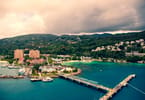Sinajaus kalnas ED, pragaras žemėje
In the last two months, I have had up close and personal encounters with the EDs of two major medical institutions in New York City, Mount Sinai, and NYU Langone. Because Mount Sinai has used Dante’s vision of hell as its model, I will not linger on the thousands of horrors waiting any person who is brave enough to enter this facility.
From hundreds (perhaps thousands) of patients waiting for medical attention, stacked on gurneys parked closer together than sardines in a can, to people so sick they are vomiting into bed pans and screaming with pain at their top of their lungs, almost everyone is ignored by the few health care professionals available to deal with the sick and injured at Mount Sinai.
Doctors are not readily available to anyone! Forget the doctor/nurse images that cross television screens from Chicago Med and Grey’s Anatomy; the belief we have been consuming about doctors, nurses, and hospital administrators are pure fiction and have a lesser degree of authenticity than Goldie Locks and the Three Bears.
At Mount Sinai, sanitation is a concept that appears exclusively in a dictionary. The very basic supplies, from toilet paper to handi-wipes and feminine hygiene products – all supplies are kept out of sight (if they exist at all). Doctors make quick fly-bys – searching for patients by yelling their name and waiting for the sick or injured person to raise a hand and identify themselves. Sometimes the medical staff has to climb over and around the stacked gurneys because the person they are seeking is four rows in the rear, and they have to fumble around the myriad of other patients desperately seeking to talk with a doctor or a nurse (think of a war zone with causalities stacked after a bomb explosion with each solider reaching desperately for attention). I have visited hospitals in emerging countries, and the Mount Sinai experience ranks below medical care available in the least-developed Caribbean countries, India, or South Africa.
Patients are left to their own devices for hours and days without food, water, sanitary products, medications, or updates on their condition, combined with long walks to toilets. If you do not have a cell phone, you can forget about communicating with anyone. If you do not have a charger and back-up energy, forget about Wi-Fi and telephone access as there are no charge stations near the gurneys and the computer terminals are for staff only.
After almost 10 hours of being tested and poked by a myriad of unnamed and unknown medical people, I was finally informed that because of the severity of my condition, I would be admitted to a hospital bed. Hours passed and the only movement was by a nurse who moved my gurney ever closer to others as there was a surge in ED patients and there was no more available space. Forget about the 6 feet of distance for COVID precautions, forget about updated HVAC systems, Covid was not even an after-thought in the Sinai emergency environment. When I finally found a nurse who would talk with me (and stop staring at a computer screen), I was told that I could wait up to 72 hours to actually get a bed in the hospital (and this was on a good day). I did try to contact the gastro doctor who referred me to the Sinai ED – but he did not respond to emails and there were no other ways to contact him.
I was too sick, too hungry, too dirty, and too angry to remain at Sinai – so I checked myself out of the hospital and was determined to deal with my medical issues at home. I had to hunt down my nurse (again) and convince him to take his eyes off his computer screen to tell him I was leaving. He contacted a doctor in the gastro department because paperwork was required prior to release. Minutes/hours later a doctor finally arrived at my gurney. Once he quizzed me on my name and date of birth, he wanted to know why I was in the ER and the name of my doctor! This “doctor” had no idea who I was and could care less. The only interest from this fellow? Get the paperwork signed, get the nurse to take out my IV tubes, and send me on my way.
I survived Sinai ER, but memories of the nightmare are etched on my brain forever. My personal recommendation: do not, under any circumstances, go to Mount Sinai for medical emergencies.
Through good fortune I was able to hail a taxi (I had no charge left on my cell phone and no hospital address, so Uber and Lyft were out of the question). I went home, took a shower, tried to sleep, and when I awoke, tried to figure out what to do next.
Paskyra tęsiasi
I was unfortunately not on the road to a miraculous cure or immediate recovery, and my condition deteriorated as the hours moved into days and weeks. Through dogged perseverance I pushed my way through the NYU Langone physician blockades, finally finding doctors who would accept new patients with appointments available a few days/weeks and not months in the future. Through luck I found a gerontology physician who had the presence of mind to schedule a sonogram and this test validated my condition, giving other doctors a pathway to a solution. This was not a smooth sail.






















